Katana swords made by Citadel
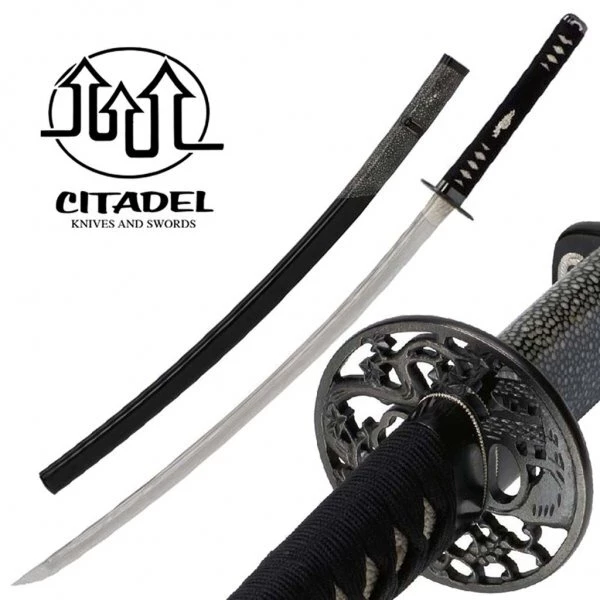
Contents
He needed knives to the restaurant, he started make them himself
 Dominique Eluere was born in 1951 in France. At first he moved to Vietnam and with friend he had a restaurant there. He wanted quality French knives for this restaurant. And so when he arrived to Phnom Penh in Cambodia, he came with crazy idea and established manufactory for making traditional Japanese swords in 1997. Dominique started to work with Cambodian blacksmith and started to make swords by antique ones. Japanese methods of making katana are closely guarded secrets among sword makers, so it took Citadel around three years to master the complicated and time-consuming process. They broke many blades than they hand made the right Japanese sword.
Dominique Eluere was born in 1951 in France. At first he moved to Vietnam and with friend he had a restaurant there. He wanted quality French knives for this restaurant. And so when he arrived to Phnom Penh in Cambodia, he came with crazy idea and established manufactory for making traditional Japanese swords in 1997. Dominique started to work with Cambodian blacksmith and started to make swords by antique ones. Japanese methods of making katana are closely guarded secrets among sword makers, so it took Citadel around three years to master the complicated and time-consuming process. They broke many blades than they hand made the right Japanese sword.
Visit the Citadel manufactory
Everybody was amazed when entered to the hand manufactory of katana in Phnom Penh. There are dozens of workbenches in the middle of sparks and flames and about 60 craftsmen are busy producing weapons from a bygone age.
High carbon steel from Europe is heated in coal fire and beaten and forged by hand hammering into the basic shape. This process can last weeks. Then the blades are covered with the base of clay and heated for a critical temperature for the differential hardening quench. The quenching process is moment of truth in making a samurai sword for any smith. This process puts the blade under tremendous stress. When crack or further flaw in the blade is produced, the blade can be thrown to the scarp bin. And the smith can start from the beginning. If the quench is successful, the blade is then tempered to its final hardness. Each katana is unique because the smith don´t use the casts. They make every blade by hand.
hammering into the basic shape. This process can last weeks. Then the blades are covered with the base of clay and heated for a critical temperature for the differential hardening quench. The quenching process is moment of truth in making a samurai sword for any smith. This process puts the blade under tremendous stress. When crack or further flaw in the blade is produced, the blade can be thrown to the scarp bin. And the smith can start from the beginning. If the quench is successful, the blade is then tempered to its final hardness. Each katana is unique because the smith don´t use the casts. They make every blade by hand.
Quenching and tempering is complete, so the blade is polished by hand using a mix of natural and synthetic stones and powders in the traditional manner. The polishing start with synthetic stone “Arato”, continue with natural stone “chu nagura”, through another synthetic stone “ Koma-nagura”, through another natural stone “ uchigomori”, for the final stone “hazuya” and the final powder or paste “nugui”.
The next parts of katana like habaki, tsuba, fuchi and kashira are handmade too. Citadel forges the habaki to each individual blade from solid copper for an exceptional fit. It is polished and pattern is engraved. Tsuba, fuchi and kashira are cut and engraved by hand of pure iron. They are resistant to rust but an occasional cleaning and light oil coating is recommended.
 Tsuka and saya bring all together. The wood core of tsuka or handle is carved to the fit to the blade. After it, the handle is wrapped completely in a single high quality ray skin or Japanese silk. The wrapping is an art itself and need true skills. The characteristic diamond pattern is holding by small pieces of proper paper in triangle shape.
Tsuka and saya bring all together. The wood core of tsuka or handle is carved to the fit to the blade. After it, the handle is wrapped completely in a single high quality ray skin or Japanese silk. The wrapping is an art itself and need true skills. The characteristic diamond pattern is holding by small pieces of proper paper in triangle shape.
And the last part is saya or scabbard of katana. Each scabbard is individually carved to match the blade. Hand carving and shaping from buffalo horn takes 8 hours.
Why do you buy katana from Citadel?
Each katana is an art and is regarded by many as the only serious alternative to Japanese-made swords. Japanese spirit is respecting with humility and the Japanese acknowledge existence of Citadel workshop, which is an honour for them. Citadel katana compete in quality with Japanese sword, but they are sold at a fraction of their cost, which is their big advantage.
Workshop Citadel produces unique and collectible samurai swords which are hand made by using traditional methods and original materials. They produce small amount of katana but they have high quality. The order takes few months but it is worth to wait.
Each sword is one and only and make by hand of masters. The Citadel have purpose to make katana not only effective but beautiful and harmonious as well.

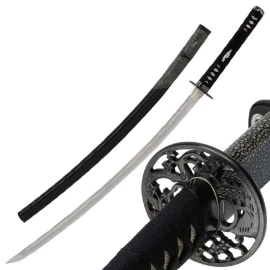
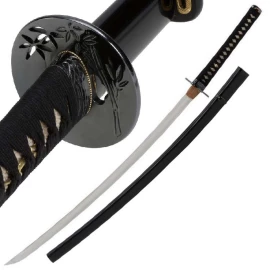
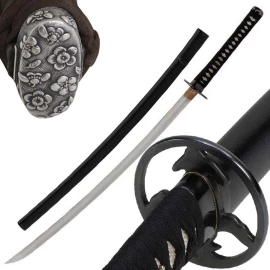
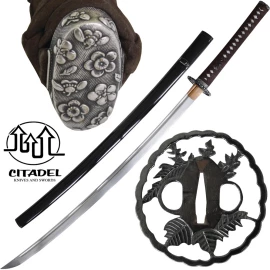
Comments (1)
I have many katanas. I have yet to find one that is the equal of my Citadel Ocean Katana. I have had it a few years. It is for display only. I disassembled it a few months ago. I was further amazed at the fit and finish of this exquisite sword! Even the tsuba was engraved by the smith who made it! I found it to be true with this blade, what the experts say: "......... with the best katanas one will find them to be be more solid and yet easier to disassemble". With the 'all hand made' variety, most smiths spend an incredible amount of time on fit and finish. As with any device where different materials make up the whole and designed for disassembly for cleaning, (firearms samurai swords) the correct tolerances between the various materials will define the quality. In my opinion, the better this is executed in a samurai sword the closer it becomes to a work of art. This is where I find that my Citadel out classes all of the competition. Of course the materials are second to none, but the attention to detail if off the charts. The amount of time and expertise that must go into this sword warrants a review like this one. Each time I look at it the more detailed perfection I find. Certainly, some critics believe the diminishing returns aren't worth the price. Such critics are not making apples to apples comparisons. Citadel katanas should not be compared to the sub-one thousand dollar brands. Rather they should be compared to the true Japanese master smith shinken blades that require a special permit to leave the country. This is a much more realistic comparison. These Japanese blades that I have considered price starting at $8000. My Ocean is a bargain at $2699, and my #57/100 won't be a blade every body and their brother has. Thank You Citadel. AF Marshall, Scottsdale, AZ. USA